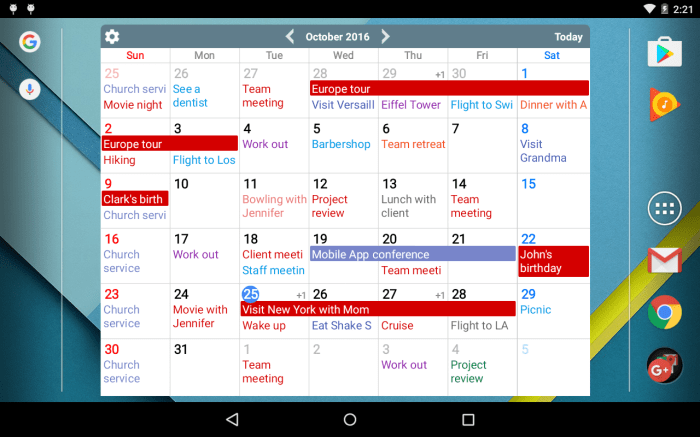Scheduling calendar apps have revolutionized how we manage our time, transforming from simple digital diaries into sophisticated productivity powerhouses. This exploration delves into the bustling market of these apps, examining their core features, integration capabilities, user experiences, and future trends.
We’ll look at major players, pricing models, and user feedback to paint a comprehensive picture of this ever-evolving landscape.
From basic scheduling to advanced AI-powered features, we’ll dissect the functionalities that make these apps indispensable for individuals and businesses alike. We’ll compare popular apps, analyze their strengths and weaknesses, and consider how they integrate with other productivity tools.
Ultimately, we aim to equip you with the knowledge to choose the perfect scheduling app for your needs.
Market Overview of Scheduling Calendar Apps

The market for scheduling calendar applications is a dynamic and competitive landscape, constantly evolving to meet the diverse needs of individuals and businesses. These apps have become indispensable tools for managing time, coordinating schedules, and improving productivity across various sectors.
The increasing reliance on digital tools and the growing need for efficient time management contribute significantly to the market’s expansion.
Major Players in the Scheduling Calendar App Market, Scheduling calendar apps
Several key players dominate the scheduling calendar app market, each offering a unique set of features and functionalities. These companies have established strong brand recognition and user bases through continuous innovation and adaptation to market demands. Google Calendar, Microsoft Outlook Calendar, Apple Calendar, and scheduling-focused apps like Calendly and Acuity Scheduling represent a significant portion of the market share.
Their success is largely due to seamless integration with other productivity tools and platforms, user-friendly interfaces, and robust features catering to diverse user needs.
Pricing Models of Scheduling Calendar Apps
Scheduling calendar apps utilize various pricing models to cater to different user segments and needs. Many offer a free version with limited features, often acting as a gateway to premium subscriptions. Freemium models incentivize users to upgrade to paid plans for access to advanced features like team collaboration tools, advanced analytics, or increased storage capacity.
Some apps, particularly those targeted at businesses, operate on a subscription-based model with tiered pricing plans based on the number of users or features included. Others might offer one-time purchases for perpetual licenses, though this model is less common in the current market.
The choice of pricing model often reflects the app’s target audience and the complexity of its features.
Comparison of Popular Scheduling Calendar Apps
The following table compares four popular scheduling calendar applications based on key features. This comparison highlights the varying strengths and weaknesses of each app, enabling users to make informed decisions based on their specific requirements. The table is designed to be responsive, adjusting its layout based on screen size.
| Feature | Google Calendar | Microsoft Outlook Calendar | Apple Calendar | Calendly |
|---|---|---|---|---|
| Free Version | Yes | Yes (limited features) | Yes | Yes (limited features) |
| Paid Version | N/A (part of Google Workspace) | Part of Microsoft 365 subscriptions | N/A (integrated with Apple ecosystem) | Yes (various subscription tiers) |
| Team Collaboration | Excellent | Excellent | Good | Excellent |
| Appointment Scheduling | Good | Good | Good | Excellent |
| Integration with other apps | Excellent | Excellent | Good (within Apple ecosystem) | Good |
| User Interface | Simple and intuitive | Feature-rich, can be overwhelming for some | Clean and simple | User-friendly, focused on scheduling |
Conclusive Thoughts
In conclusion, the scheduling calendar app market is dynamic and competitive, offering a wide range of solutions to suit diverse needs and preferences. From simple to sophisticated, these apps continue to evolve, incorporating AI and other technologies to enhance productivity and streamline scheduling.
Understanding the market landscape, key features, integration capabilities, and user feedback is crucial for selecting the optimal app and maximizing its benefits. The future of scheduling is undoubtedly intertwined with the continued innovation in this space.
